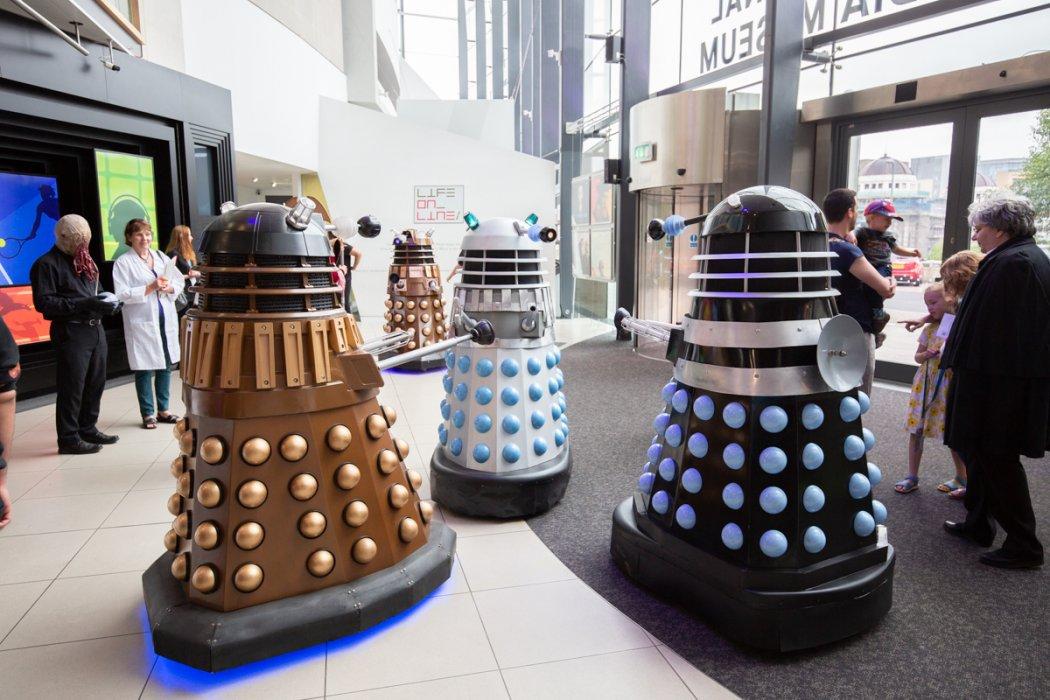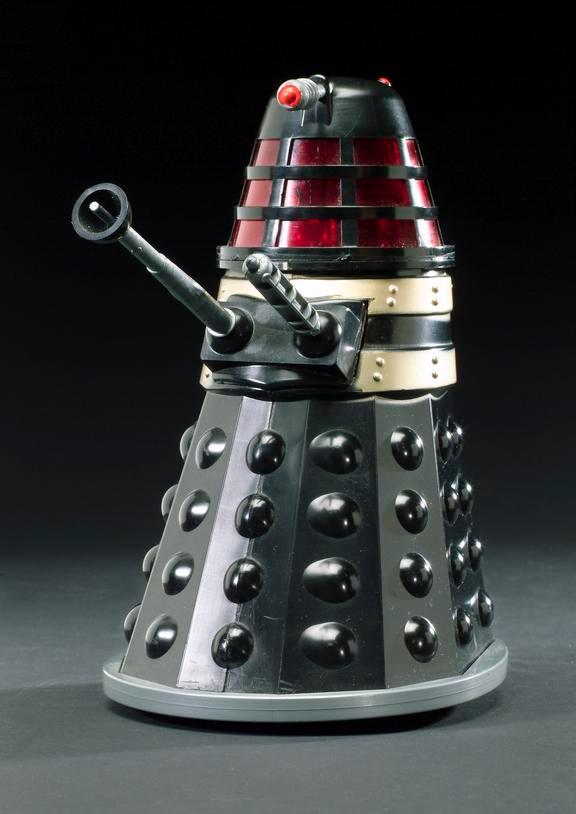“Exterminate!”

The Daleks are an alien species whom many may recognise from their repeated appearances on the television programme Doctor Who. They were introduced to the programme in 1963 under the guide of scriptwriter Terry Nation. Nation worked alongside designer Ray Cusick to create the visual appearance of the Daleks. They achieved a design that hinged between terrifyingly alien and domestic familiarity. It would terrify generation after generation.
Luckily, the Daleks are confined to the small screen of your television… that is, unless you find yourself in Bradford, where a life-size Dalek haunts the halls of the National Science and Media Museum.
The Dalek keeps watch from the far corner of Experience TV. Its squat and rotund figure means it would be easy to mistake for an overly large pepper pot. In fact, many Doctor Who viewers assume this was where Cusick’s inspiration stemmed from. There is a grain of truth in this: Cusick modelled the movement of a Dalek on a pepper pot, using it to demonstrate the way a Dalek might glide across a surface. The species itself wasn’t intended to look like the utensil—yet, despite Cusick’s intentions, the resemblance is uncanny. So, how did an oversized pepper pot become the villain of the modern age?
Perhaps it’s the lethal quality of their weaponry: after all, each Dalek is equipped with a death ray. However, this is supremely unlikely considering the aforementioned death ray resembles an egg whisk. So maybe it’s actually the sum of these domestic objects that creates the monster.
We can find a precedent for this in Mary Shelley’s novel Frankenstein. The character of Dr Frankenstein assembles the limbs of various humans until he has a complete body. Despite conforming to the base shape of a human body, the figure is misshapen and contorted and is therefore perceived as monstrous. Similarly, the Dalek is an amalgamation of banal kitchen appliances but their accumulation is disorientating as it distorts their familiarity. Therefore, they also become monstrous. The Dalek’s villainy is perpetuated through the design’s appropriation and distortion of humanity’s most commonplace and harmless gadgets.

While the design may be an amalgamation of kitchen appliances, it’s important to note that the appliances are coated in an unidentifiable metal. Interestingly, Cusick did not restrict the metal coating to the gadgets; instead, it coats the entire shell of the Dalek. This further dismantles the humanity of the Dalek as it crosses further into alien territory. More specifically, the Dalek’s metal coating causes it to resemble a robot. As a result, the species is distinctly inhuman with each earthly element only increasing its villainous appearance.
The museum is currently temporarily closed, and will reopen to the public from Wednesday 19 August 2020. When we reopen, why not come along to Experience TV and see the resident Dalek in the flesh (or metal)—if you dare…